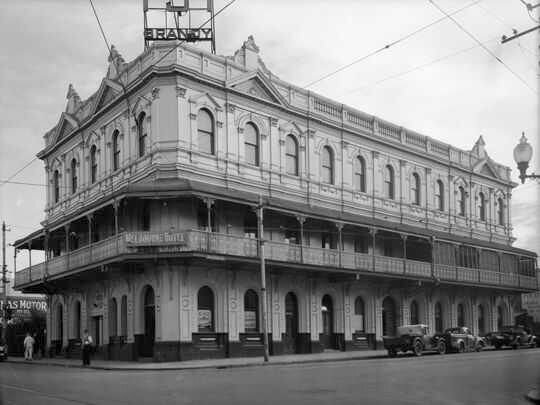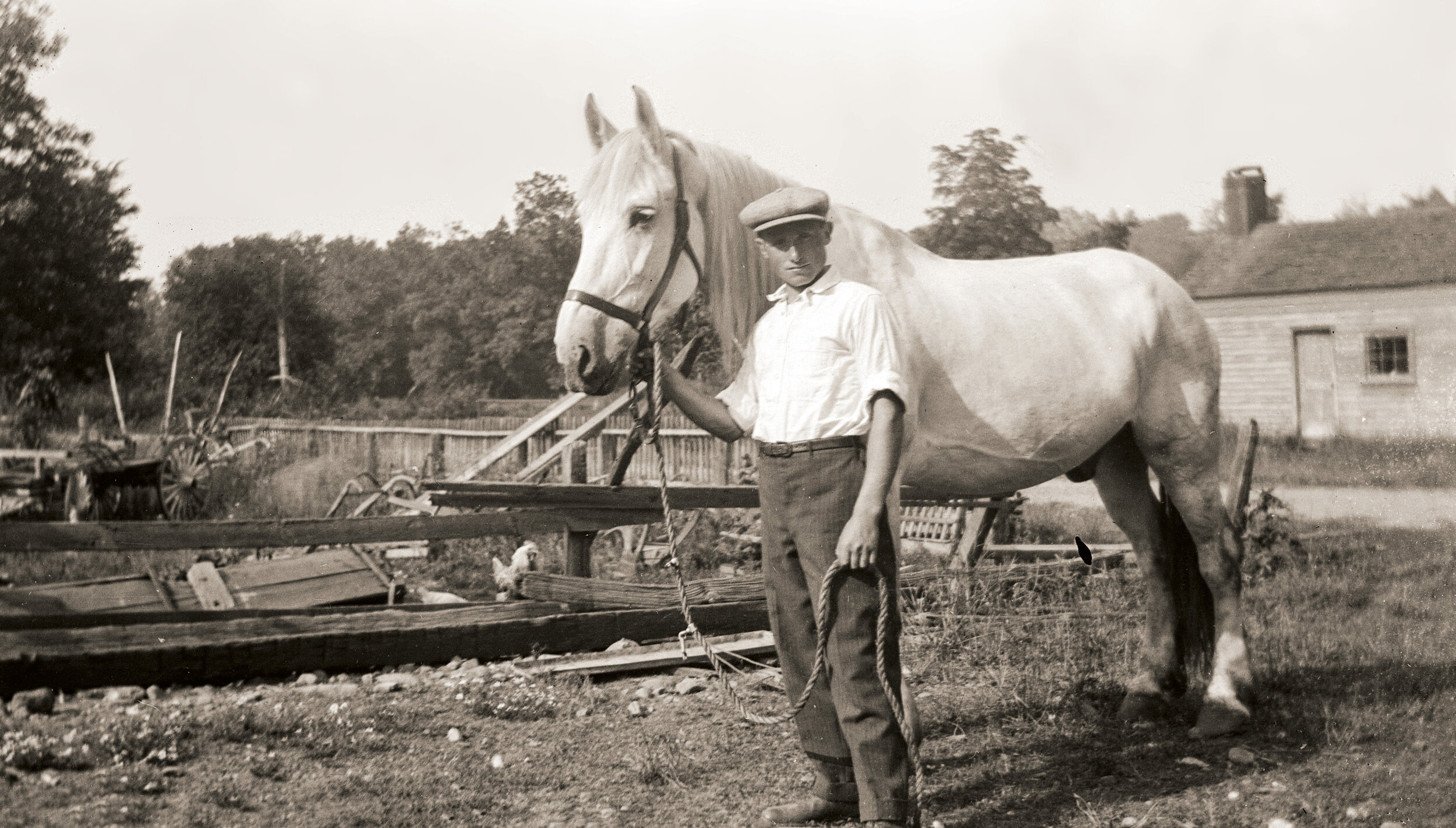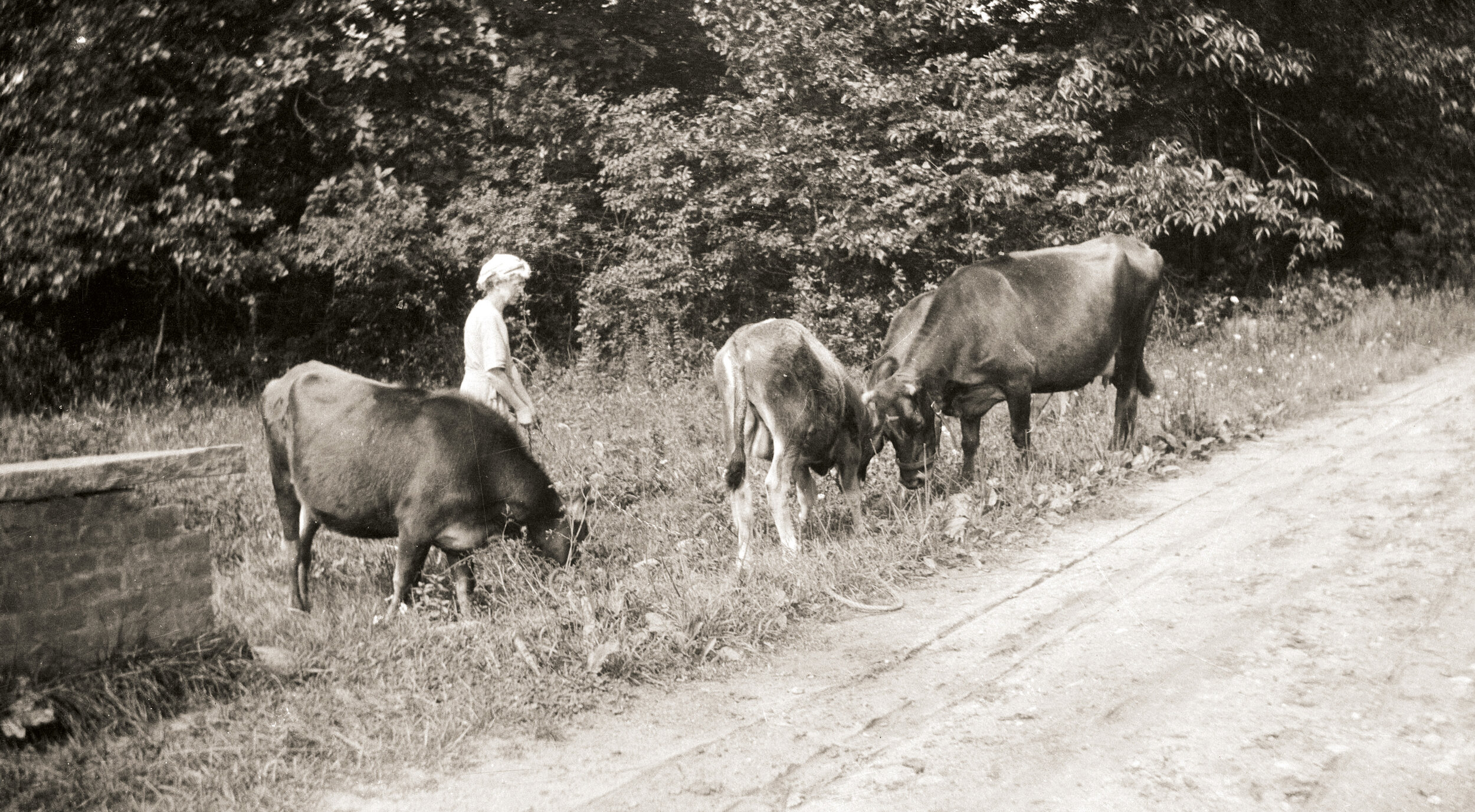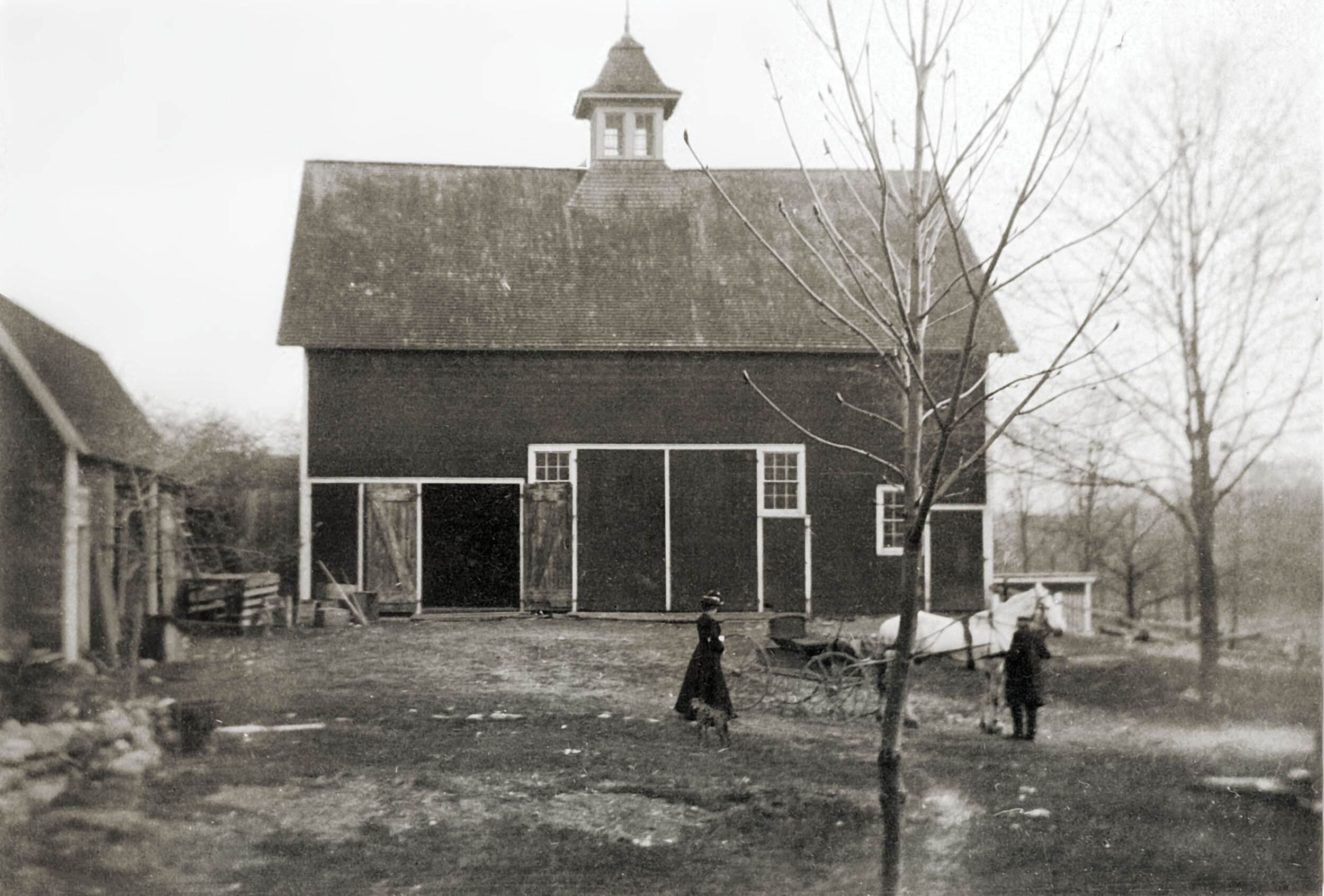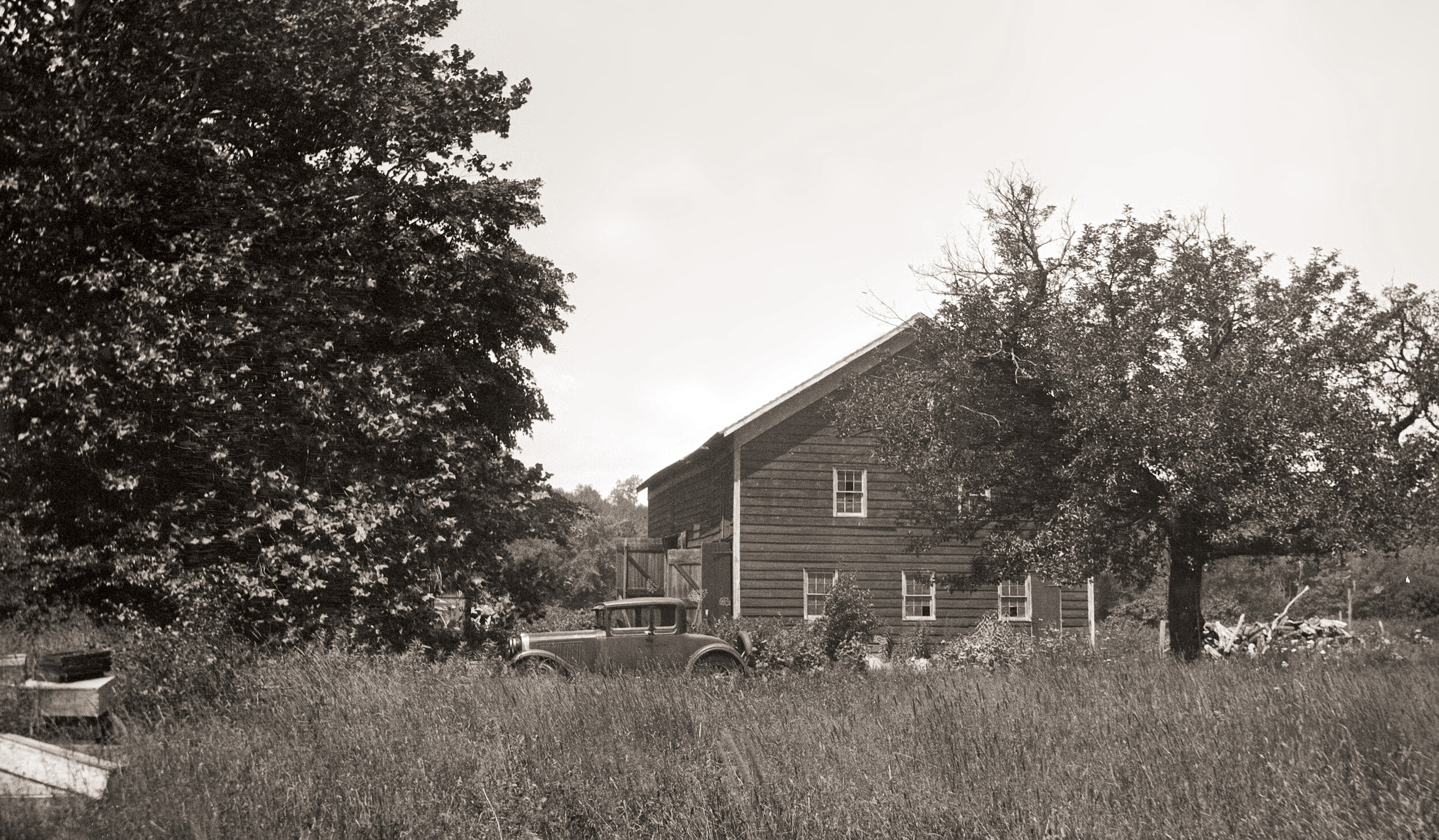Northern Highlands student, Kaitlyn Shang, recently completed an ambitious project exploring the history and the overall draw that resident have to Upper Saddle River. We wanted to share her great work with the community.
John and Albert DeBaun and the Australian Gold Rush
Our spring 2021 newsletter details the adventures of John and Albert DeBaun, who left Upper Saddle River in the 1870s and journeyed farther than anyone from USR had ever been - to Adelaide, Australia. The DeBauns were loyalists and supported Lincoln and emancipation and the family was involved in local politics. They also likely felt a connection to the broader British Empire, including Australia. They may not have known anyone, but landed and made their way. Below are additional photographs of the Outback towns that they made their mark on and the various hotels they constructed, several of which still survive, as well as photos of Albert DeBaun’s descendants. Their journey was very unique and their early impact on the growth of Australia seems to be recognized to this day.
Albert Hopper DeBaun, born in Upper Saddle River in 1857. Photo courtesy of Albert’s great granddaughter, Clare Macken, of Sydney, Australia.
John DeBaun, born in the James DeBaun house in Upper Saddle River, NJ in 1852.
This overhead image from about 1950 shows the James DeBaun farm on West Saddle River Road in Upper Saddle River, where John and Albert were born. The house still stands, but the barns are no longer extant.
John and Albert initially settled in Wilcannia, NSW, but made their way to Silverton and Broken Hill, where they invested in ancillary businesses that helped the mining industry. Albert continued west to Boulder, Western Australia.
View of Silverton, New South Wales. John DeBaun’s hotel on Bourke Street is the 2-floor structure with double porches on the right. It is no longer standing.
A drawing, likely done from the image above, in 1887, showing John DeBaun’s hotel on the right.
Circa 1885 view of Burke Street in Silverton looking west with John DeBaun’s hotel on the left.
As included in the caption above, this image shows John DeBaun’s hotel in 1888 when Lord Carrington, Governor of New South Wales, visited. It brought quite a crowd.
This image was taken in 1967 of the remaining ruins of John’s hotel. The foundation is still there today. The town is essentially a ghost town now, with the population very much shrunken and industry focused on tourism.
An article from the Express and Telegraph (Adelaide, SA) mentioning John’s return trip February 4, 1886 to Upper Saddle River, after making a small fortune in Silverton.
This 1931 image from the Australia National University Archives shows John DeBaun’s hotel in Broken Hill, NSW.
This early image shows what Broken Hill looked like at the height of the mining boom.
From Broken Hill, John moved west to Coolgaridie in Western Australia. This wonderful print was done in the late 1800s and shows an overall view of Coolgardie, though John DeBaun’s bakery and hotel and not visible in the image.
John De Baun’s Great Western Hotel, also known as De Baun’s, in Coolgardie in 1894. It was built as a simple barrack for miners, but began as just a bakery with John selling bread made in a simple oven.
Stagecoaches outside the Great Western Hotel in Coolgardie, Western Australia, likely in the 1890s.
This image from 1894 shows the series of buildings that made up the Great Western Hotel in Coolgardie. The caption on the photo reads, “Coach leaving J. De Baun G-Western Hotel For Southern ….? Coolgardie ?/12/1894”
John’s first wife, Rachel, died in 1895 while they were living in Coolgardie, Western Australia. This is an image of her broken gravestone.
John left Coolgardie for Perth and either leased or sold the Great Western. It burned down in 1897. This image shows the aftermath of the fire. The same chimney is visible that appears in the image above.
John purchased the Freemasons Hotel in Perth, seen here, which housed one of the country’s first pubs. He demolished it to construct the Palace Hotel (below) on St. Georges Terrace.
The Palace Hotel, Perth, c. 1905, which occupied a prominent corner location. John hired architects Ernest Saunders Porter and Edmond Neville Thomas to design the structure.
View of Perth in 1890 with the Palace Hotel on the left.
Palace Hotel Dining Room c. 1910
The former dining room of the Palace Hotel has been restored and currently houses Meat & Wine Perth, as seen above.
Palace Hotel, Perth, Smoking Lounge c. 1910
This is a more recent image of what the lobby of the Palace Hotel looked like. The building has been renovated with a tower extending above it and most of the interior spaces gutted, apart from the former restaurant.
c. 1930s view of John’s Melbourne Hotel in Perth before it was enlarged (and then contracted). It serves as a high-end hotel today by the same name.
Current view of the Melbourne Hotel (2020) with its large, contemporary addition.
Near the end of his life, John De Baun, leased his Palace Hotel to a congressman and bought a fleet of 2-masted schooner ships that were constructed in Fremantle, outside Perth between 1903 and 1907. He had them sailed to the north coast of Australia, over 1,000 miles, where he endeavored to try his hand in the pearling industry. He settled in the town of Broome, seen above.
This image shows a number of 2-masted pearling “luggers” like the ones John De Baun owned. It was taken in Thursday Island around 1910. Six of John’s ships were lost in a typhoon that killed dozens of people.
The obituary of Albert De Baun, from 1918.
Albert John De Baun, Esq, in 1912, when he was awarded a scholarship at Melbourne University. He was born in Menindee (Broken Hill), New South Wales, in 1894 and died in Sydney in 1961.
Albert John De Baun in his 20s
Albert Hopper De Baun’s son, Albert John De Baun, Esq. and his wife, Ethel B. Williams, later in life.
John’s second marriage took place in Perth, to Ada B. Williams.
Remembering World War II
75 Years Ago, Upper Saddle River’s Men Were Coming Home
Upper Saddle River’s population was just over 500 when World War II started, but the town did its share. Forty-four men joined the Armed Forces. Many others, men and women, worked in war plants or volunteered with the Red Cross and other organizations.
Over the years we have collected stories, photos and ephemera from many of those people, and from other veterans who moved in just after the war. They are all gone now but for the next few months we will be posting photos and memories from our archives to share their stories once again.
First Lt. Peter J. Odo
Peter Odo was not technically from Upper Saddle River when he joined the Army. He was from Saddle River and his name is on their WWII marker. But in March 1942, shortly before he left for Officers Candidate School at Fort Benning in Georgia, he had gotten married to Rosemary Otens of Upper Saddle River and they were living with her family, who lived just north of where Presentation Church is today. And it was to Rosemary’s home that he returned in 1945. Soon after they built their own home on Union Avenue. Peter was teaching school, but was elected to the Upper Saddle River Borough Council. In 1956 Steven Goetschius retired and Pete Odo replaced him as Borough Clerk. Pete continued teaching school and worked as clerk in the evening until 1966, when the job became full time. He retired in 1981. Many residents remember him — he was an integral part of Upper Saddle River’s formative years from a rural farm town to a highly touted suburban town.
Peter shared a story from his army days at our World War II event in 2006. It was a newspaper clipping from The Ridgewood News, shown below, detailing how he bagged 200 Nazis single-handed. He laughed about it. It was the end of August 1944 and his unit was in southern France. The Germans there knew the war would be coming to an end and they wanted to surrender to Americans rather than to the French. Pete was in a jeep and he told us that the truth was that he had a driver and a sergeant with him, but his commanding officer gave him all the credit.
Looking through the site for Newspapers.com, there were more stories about Pete. He was with the U.S. Seventh Army, 45th Infantry Division. They started in the Mediterranean Campaign, under General Patton, moving up through Italy. Then their unit moved into southern France. A small article in the Ridgewood News in October 1945 speaks volumes:
“First Lieutenant Peter J. Odo returned to this country September 18, aboard the Thomas Barry, after 2 years overseas duty [he shipped over in September 1943]. Lt. Odo was with the 45th Division and saw action in Italy, France and Germany. He holds five campaign stars, the Purple Heart for wounds received in France in December 1944, and the Bronze Star awarded after Anzio Beachhead.” — Ridgewood News 10/12/45
The Seventh Army served under Lt. Gen. George S. Patton, Lt. Gen. Mark W. Clark, and Lt. Gen Alexander Patch. After Anzio and Rome, Pete’s 45th Division took part in the invasion of France by its Mediterranan coast. It then drove a retreating German army north and west toward Alsace where they were absorbed by the Sixth U.S. Army group. The Seventh Army fought its way across the Rhein into Germany, capturing Nuremberg and then Munich.
VE-Day, May 8, 1945, was a cause for celebration. The joy ended, however, when the 45th Infantry Division took part in the liberation of Dachau. Records state that when the soldiers entered Dachau, found “thirty railroad cars filled with bodies, over 9,000 of them. There were still 30,000 inmates, starving, in rags and barely alive.” It was the first work camp, established by Hitler in 1933. When inmates could no longer work, they were sent on to one of the exterminations camps. Peter’s daughter Betty said it was something he could not talk about. It made him too emotional. In fact, she said he did not talk about many of his experiences during the war.
Peter did share his World War II story when he spoke at one of Upper Saddle River’s Memorial Day services when Ken Gabbert was mayor.
Rosemary and Peter on their wedding day.
The above appeared in The Ridgewood Sunday News on August 31, 1944 and the 3-line promotion notice on December 7, 1944.
REEVES WOOD PHOTOGRAPHS
Reeves Wood moved to Upper Saddle River around 1910 with his parents and siblings. His sister Bertha was an artist and Reeves took up photography. He developed his own photos as well and set up a dark room in their house. When they first arrived in town they rented the Terwilliger-Eckerson farm on Carlough Road for the first few years after Mr. Eckerson was widowed and moved to Ramsey. The Wood family hadn’t farmed before and they hired Sam Kanreck to work as a farm hand. Sam is pictured in many of Reeves’ photos.
In 1915 they bought the Terhune-Hopper house on Lake Street and West Saddle River Road. The house passed to an adopted child and her husband and remained full of their many farm implements, objects and furnishings into the 1980s and early 1990s. During an estate sale a pile of the glass negatives Reeves took were found in the attic and saved. Below are several of them that depict scenes in Upper Saddle River. We will be adding to this collection, so please check back.



























